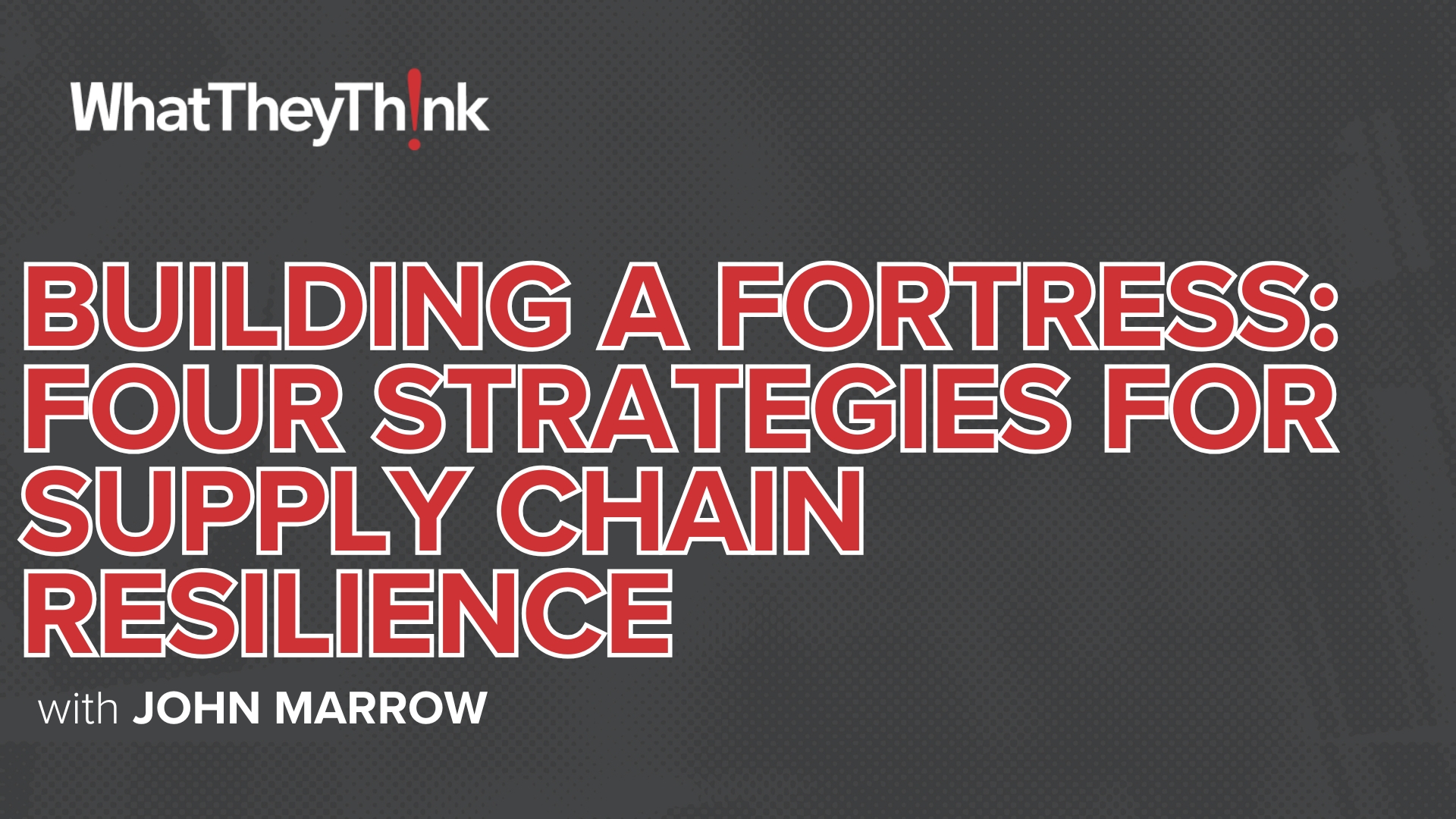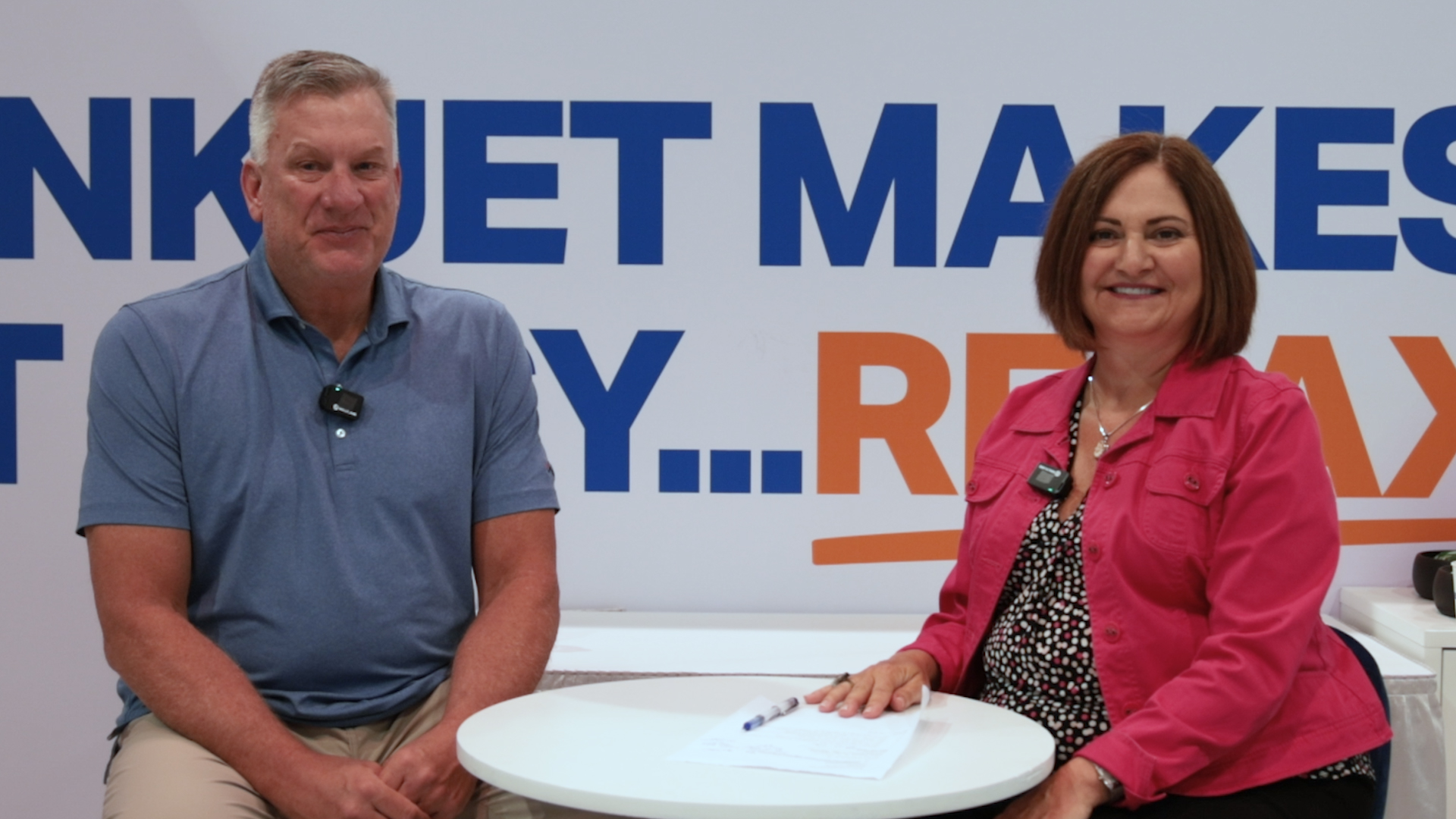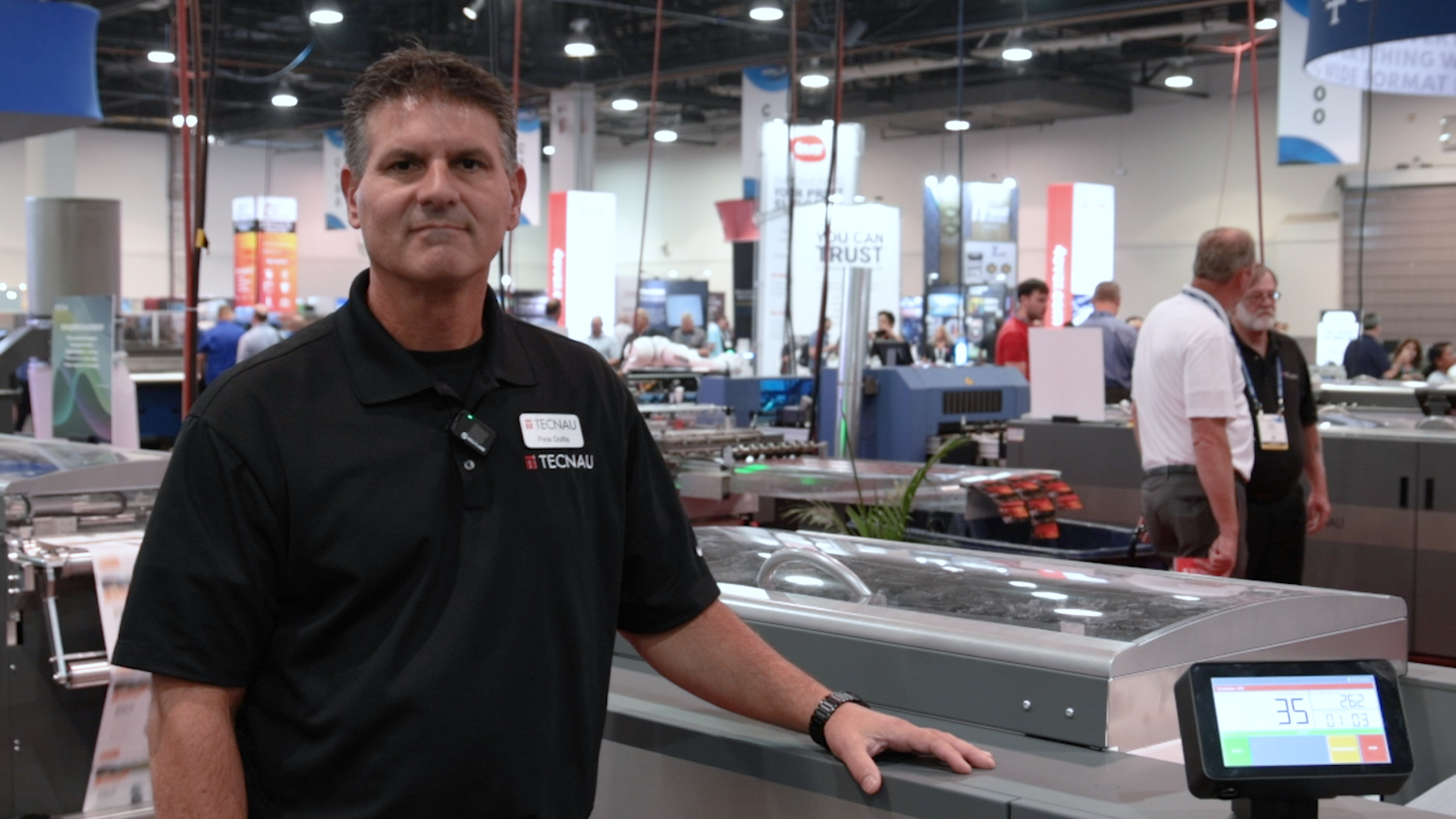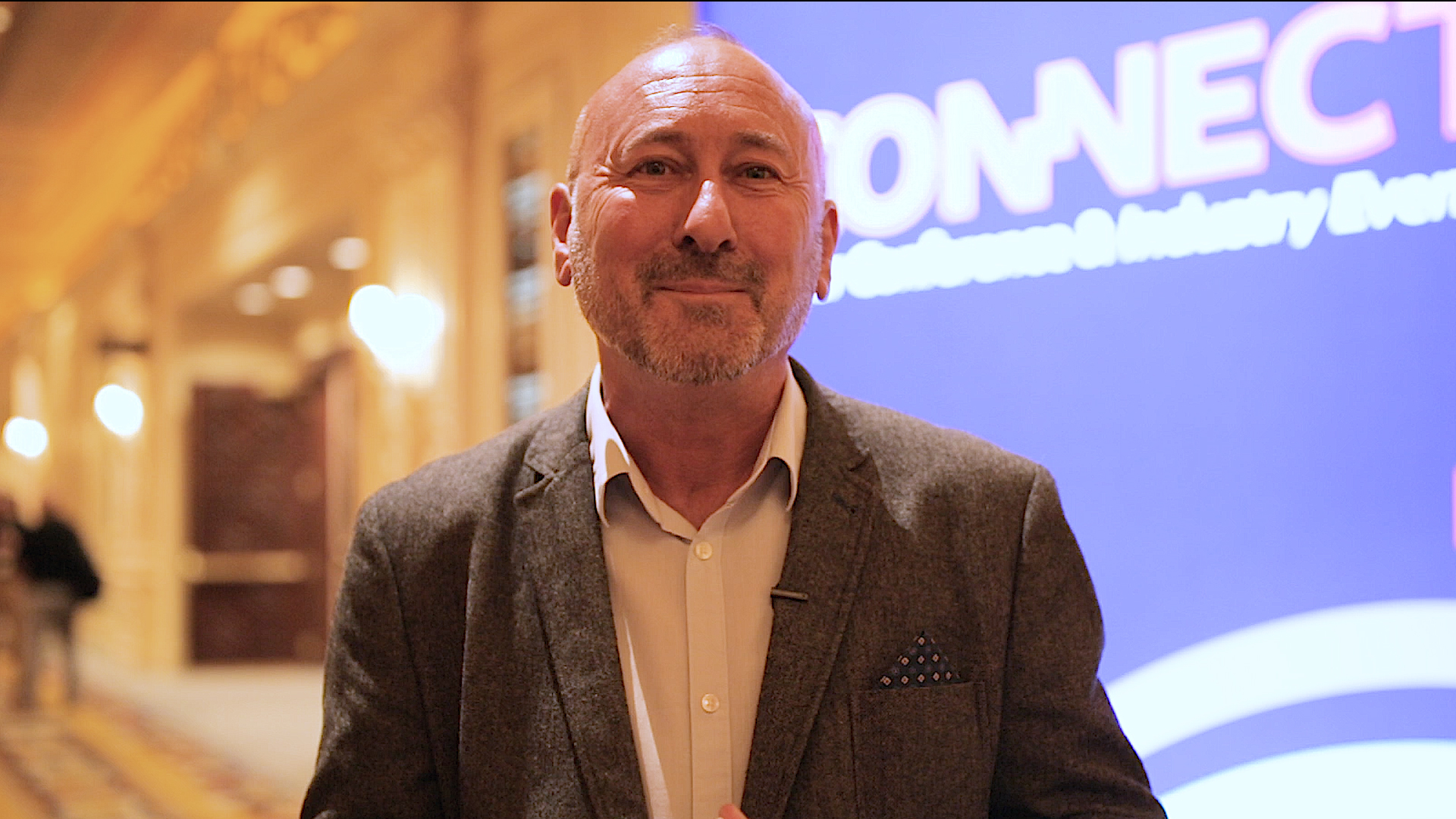Commentary & Analysis
Displaying 651-750 of thousands of articles
Insight You Need. Analysis You Trust.
Get the trusted insights you need to understand our evolving industry and emerging trends. Become a Premium Member.
Unleashing the Power of Fiery: A Consultant's Journey in Revolutionizing Printing Workflows
A growing number of printing companies are placing increased focus on workflow automation as the industry continues to face competitive challenges, both from inside and outside the industry. In this article, sponsored by Fiery LLC, we speak with Meredith Nichols of Nichols Associates, who is Fiery Certified as well as a Certified G7 Expert. She explains how she works with clients to help them reach those automation goals.
Screen Printing Establishments—2010–2020
According to the latest, recently released edition of County Business Patterns, in 2021 there were 5,559 establishments in NAICS 323113 (Commercial Screen Printing). This represents an increase of 25% since 2010—but a decrease of -0.1% from 2020. In macro news, the third estimate of Q2 GDP is unchanged, but with some subtle changes “under the hood.”
Around the Web: Dietary Designer. Paper Pictures. Meteorological Melee. Silly Soda. Korean Characters. Convenient Cookware. Roman Restaurant. Fleeting Food.
The designer of the nutrition label, Burkey Belser, has passed away. Designer and artist Alexa Edgerton’s letter-shaped cakes. Two artists whose chosen medium is rolled-up paper. Two St. Louis TV stations battle it out over the phrase “First Alert Weather.” Coke’s Y3000 soda was developed with AI, with predictable results. When in Seoul, visit the National Hangeul Museum, dedicated to the history of Korea’s national writing system. Has the James Webb Space Telescope found evidence of potential life on Europa? Panera Bread has a “Roman Empire menu,” but it could be more accurate. McDonald’s has a secret “McBrunch Burger,” which is only available for a few minutes a day. All that and more in WhatTheyThink’s weekly miscellany.
Pushing the Boundaries of Luxury Wallcoverings, Emiliana Parati Invests in Epson Technology
Digital printing has been a boon for efforts to make textiles and apparel, including home decor, more sustainable. And with both businesses and consumers looking for interior decor options, customized wall coverings are gaining popularity as well. In this article, compliments of Debbie McKeegan, textiles expert and WhatTheyThink contributor, she profiles Italian company Emiliana Parati, based in the province of Cremona and in business for almost half a century, with a focus on how they have integrated digital printing into the mix.
2023 FESPA Print Census Highlights Global Wide-Format Trends
The FESPA print census is an industry barometer that helps vendors and print service providers (PSPs) understand market dynamics in key industry segments, including signage and display, graphics, textile, and industrial. With nearly 1,800 respondents from 120 countries, this year’s survey continues a research partnership between FESPA and Keypoint Intelligence that began back in 2007. This article provides a top-level overview of the findings from our most recent survey.
How Leadership Works
In the first installment in this new “Smart Leader Insights” series, Wayne Lynn explores how leadership works, all the moving parts of leadership, and how to become a better leader.
Turnover and Employment in Print in Europe—Switzerland
This bi-weekly series of short articles aims to shed a spotlight on the size of the printing industry in Europe per country and how revenues and employment developed in 2020, when the pandemic impacted businesses. This time we look at Switzerland, the eighth-largest printing industry by turnover in Europe.
Goodbye Brochures, Hello Yard Signs and Signage
Heidi Tolliver-Walker looks at how diversification can help print businesses retain customers.
Xerox Withdraws from drupa—and From Production Print?
Following the news that Xerox has pulled out of drupa 2024, European section editor Ralf Schlözer explores the ramifications of this announcement and what it might mean for Xerox’s future in production print.
Product Spotlight: PRISMAcolor Manager—On Cloud Nine
Canon’s PRISMA offerings include a wide range of applications and tools to help optimize print production workflows and digital printing production. These solutions have amassed over the life of PRISMA and have adapted to the changes in technology and production requirements, as their use requirements have changed significantly over the years. David Zwang takes a close look at how PRISMA has evolved, focusing especially on a recent addition to the software suite: PRISMAcolor Manager.
Tool Time Versus Club Med
Do you rely on maintenance contracts to keep your equipment running? Or are you more hands-on—or perhaps adopt some kind of hybrid approach? Contributor Pat McGrew looks at your options for equipment maintenance.
July Shipments: Down, Down We Go
In a year that continues to surprise, July 2023 printing shipments came in at $7.04 billion, down from June’s $7.40 billion.
Around the Web: Type Trolls. Coin-Op Canvas. Signage Syllabus. Inertia Inquiry. Invisible Island. Brady Blunder. Cereal Slump. Avocado Aficionado.
Copyright trolling comes to typography. Paper checks are going the way of the landline and the fax machine. A vending machine for art prints. Inside Los Angeles Trade Tech College’s (LATTC) Sign Graphics program. A new paper argues that we’ve gotten Newton’s First Law of Motion wrong all these years. Why not visit Null Island, which lives up to its name. De-extincting the Tasmanian tiger. Pink Floyd fans can attend a listening party at which they can have their brainwaves monitored, for some reason. Who would have thought that buying the Brady Bunch house would be “the worst investment ever”? Apparently breakfast cereal is on the way out. Shake Shack is hiring a “Chief Avocado Officer.” All that and more in WhatTheyThink’s weekly miscellany.
Discover Print Logistic Customizers—Groundbreaking Tools Designed to Revolutionize Apparel
In the world of e-commerce, providing exceptional and personalized shopping experiences has become a must. Once, personalized offerings, intuitive user experience, and seamless returns were the hallmarks of a standout online store. Now, they are the expectations of modern consumers. In this space, we’ve written a great deal about personalized, customized and on-demand production of textiles and apparel to meet these consumer demands. In this article, compliments of textiles expert and WhatTheyThink contributor Debbie McKeegan, we take it a step further—giving consumers even more power to customize their own designs, and avoid the increasingly undesirable requirement to purchase mass-produced clothing.
New HP Latex Printer Line Targets Small and Mid-Size Print Businesses
This week, HP launched the “entry-level” Latex 630 series, aimed squarely at small and midsize print service providers. We take a look at some of the new features and capabilities.
We All Live in a Maintenance World
There are many costs associated with running a print shop. There are machine costs, consumable costs, labor, building, and utility costs. Another cost that is sometimes buried in the numbers is the cost of maintaining the equipment. Pat McGrew explains how maintenance practices and schedules should be part of the company’s Standard Operating Procedures.
Is Video Production Expertise Passe? AI-Generated Video Is Here
We all know the power of video in marketing. But who has the time and money to invest in video production? The good news is, maybe you don’t have to. If AI can write your emails, finish your texts, and write your web copy, maybe it can create your videos, too. Heidi Tolliver-Walker experiments with AI-generated video.
ICYMI: LabelExpo Europe: Back Again and Going Strong!
LabelExpo Europe is the biggest of all the LabelExpo events, and truly a global event. There were lots of new digital, inkjet and hybrid press and converting solutions in the exhibit halls. Automation and Sustainability were the overriding and common themes.
How to Work a Trade Show!
Sometimes it helps to have a refresher! Trade shows are wonderful opportunities to catch up with industry friends, learn about products, and get ideas. The challenge is making sure you bring back the information you were looking for! Everyone needs to put their best foot forward! Here are considerations for printers and vendors as the next set of shows gets underway!
Digital Direct-to-Film Gaining Steam but Challenges Remain
In recent months, we have seen a number of printer manufacturers jump into the digital direct-to-film (DTF) market, some with equipment dedicated to that application, and others hybrid DTF/DTG (direct-to-garment) solutions. Senior editor Cary Sherburne takes a look at the current lay of the land.
Commercial Printing Establishments—2010–2021
According to the latest, recently released edition of County Business Patterns, in 2021 there were 15,592 establishments in NAICS 323111 (Commercial Printing except Screen and Books). This represents a decline of 26% since 2010. In macro news, inflation is alas up.
Around the Web: Clever Cardboard. Perishing Periodicals. Nonprofit Newspaper. Madeleine’s Mystery. Roadlining Revelry. Continental Craziness. Marine Mystery. Cat Catcher. Web Warning. Dolly Days.
A new design enables easy conversion of large, used corrugated boxes into smaller e-commerce boxes. Amazon kills its Kindle Periodicals program. The Colorado Sun is going non-profit. A search for the cover artist of a beloved book. 3D-printed IBM Selectric typeballs. A tribute to the art of “roadlining.” All about the “lost continent” of Lemuria. That weird object dredged up from the Gulf of Mexico: egg or sponge? Why you shouldn’t put fake spider webs on your bushes. Dolly Parton and Duncan Hines again team up to offer holiday sugar cookies. All that and more in WhatTheyThink’s weekly miscellany.
ICYMI: What Do Print Buyers Want?
Keypoint Intelligence recently conducted a primary research study to understand print buyers’ needs and uncover purchasing trends. This article provides a brief overview of the top-level findings from that survey, including application trends and how print can be used to complement digital channels.
Sustainable Textile Printing: 6 Ways to Improve The Environmental Impact of Your Printing Processes
Are you looking for ways to make your textile printing business more sustainable? Here are six ways to accomplish that, compliments of textiles expert and WhatTheyThink contributor Debbie McKeegan and Anne de Brouwer of SPGPrints. It starts with current state—calculating your environmental footprint with a lifecycle assessment. For many companies, transportation is a big part of carbon emissions, so that’s one to tackle early on: sourcing materials and producing product as close as possible to the point of need. And, of course, shifting as much of the production to digital and on-demand as possible will also make a big dent. Even with digital printing, consider which inks, fabrics, and pre- and post-processes use the least water. And examine your supply chain to ensure you are using the most reliable partners. Read the full article for more detail!
ICYMI: Finding Great Employees in Unexpected Places
Like every other member of the printing industry, Quantum Group (Chicago, IL) is looking for the secret to finding great employees. Heidi Tolliver-Walker looks at Quantum’s employee-finding initiatives.
The Target Report Annual Review—August 2023 TTM M&A Activity
Viewed from the perspective of M&A activity in the printing, packaging and related graphic communication industries, the pandemic is fading quickly into the rearview mirror, and most printing and packaging businesses are doing well. However, there are some ripples on the water. Deal counts are down, bankruptcies and non-bankruptcy closures have ticked up in the past six months, and the impact of higher interest rates is rolling in. Packaging is still the most active segment but has cooled down considerably. The commercial print, direct mail, and wide format segments are not as active, but desirable candidates still attract a number of suitors and deals are getting done; and more…
European Print Volume Trends
European section editor Ralf Schlözer takes a break from the Europen country-by-country look at turnover and employment to provide a bigger-picture look at print volumes in Europe pre- and post-pandemic.
Traceability in Apparel: A Goal Without an End Point in Sight
The fashion industry has been under fire for some time over its excessive carbon footprint and the pollution it generates. Now a new metric is being thrown into the mix: Traceability. In this article, we define traceability and cite several reports that paint a not-very-flattering picture of progress the industry is making.
Labelexpo Europe 2023 Live
Labelexpo Europe takes place September 11-14, 2023, at the Brussels Expo. Follow WhaTheyThink's Labelexpo Europe Live page for observations and coverage of the event.
August Printing Production Employment Basically Flat
Overall printing employment in August 2023 was down 0.2% from July. Production employment was down 0.3% while non-production employment was up 0.2%.
Around the Web: Learning Letterpress. Movie Minimalism. Cement Stamp. Pothole Panacea. Mystery Museum. Privacy Peril. Smashing Spaghetti. Food Photographer.
“For a designer, learning to set metal and wood type is as essential as learning to drive a car.” Very simple, modernist posters for popular movies. Popular movies rendered as old book covers. Swiss Post honors “concrete in architecture” with concrete-infused stamp. Paper drinking straws are more likely to contain PFAs than plastic ones. Graphene aims to solve the problem of potholes. Mozilla: today’s cars are a “privacy nightmare.” Why aren’t there more roadway roundabouts in the US? Smashing dried pasta in a variety of creative ways. States ranked by how easy it is to nibble them out of graham crackers. Yelp! is hiring a food photographer. All that and more in WhatTheyThink’s weekly miscellany.
What Are You Printing Onto? The Fibers of the Future Unspun
The Alpha generation (2013–2025) is acutely aware of the environmental crisis. Climate change will have catastrophic consequences within their lifetime. Influenced by their millennial parents, this generation will also soon have the power of purchase, and as such, their choices will increasingly inform and make a significant impact on the textile industry. They are born as eco-conscious consumers and will choose and actively source environmentally secure products. This is beginning to drive systemic change in the industry, as pointed out by Debbie McKeegan, textiles expert and WhatTheyThink contributor, in this article originally posted on the Pixel to Parcel blog.
October 6 Is ISA’s Sign Manufacturing Day, Offering Sign Businesses a Great Employee Recruitment Opportunity
On October 6, sign companies will have an excellent opportunity to potentially attract new and young talent to their businesses. Every year, on the International Sign Association’s (ISA) Sign Manufacturing Day (SMD), participating sign shops host open houses, facility tours, and hands-on demonstrations for students to show them the opportunities that exist in the sign business—or even that the sign business exists.
HP’s Haim Levit on the Current State of Labels and Packaging
In this interview, sponsored by HP, Haim Levit, Senior Vice President & General Manager, HP Industrial Print, talks about the current state of the labels and packaging industry, and the growing HP packaging product portfolio, on the eve of LabelExpo Europe.
Moving/Motivating Employees Through Change
In his last article, Adaptive Capacity, Wayne Lynn discussed the importance of adapting to change effectively. In some ways, there is nothing in the leader’s toolkit quite as important. In this article, Wayne gives the leader solid advice on what to do to help their employees adapt to change.
Easy AR Comes to Gaming
Have customers looking to increase engagement time with customers and prospects? Try an AR game. Heidi Tolliver-Walker looks at RealityBLU, whose WorldViewAR platform “democratizes” AR by creating AR experiences from videos in a matter of minutes.
10 Steps to Survive a Crisis
If your company declares a disaster, what happens next? Who do you call? Where do you begin the process of business continuity? Depending on the type of disaster, the answer will vary. There are physical disasters that can be localized to the building or disruptive to a region. There are cyber disasters. And there are other issues that can disrupt your business, including vendor bankruptcies and supply chain disruptions. Are you ready?
Unlocking Printer Performance: The Key Role of a DFE in Driving Efficiency
In this article, sponsored by Fiery, we take an in-depth look at factors to consider when choosing a digital front end (DFE) for a new or existing digital printer. It emphasizes the importance of a robust DFE for efficient and high-speed print operations. Not all DFEs are created equal, and simply comparing hardware specifications does not tell the whole story; that approach can actually be quite misleading. You can also download an in-depth white paper for additional information.
Printing Establishments—2010–2021
According to the latest, just-released edition of County Business Patterns, in 2021 there were 21,521 establishments in NAICS 32311 (Printing). This represents a decline of 20% since 2010. In macro news, Q2 GDP revised downward.
Around the Web: Kerning Confab. Paint Praise. Tube Type. Freaky Fresheners. Winged Warning. Big Bovine. Dirigible Dining.
An upcoming virtual “kernference” for type lovers. A new book collects photos of hand-painted signs from around L.A. A typeface based on London Underground arrival boards. Custom-printed car air fresheners. Apollo is said to be the “iPhone of robots.” A mechanical canary that keels over when the air quality is poor and pops back up when it has improved. A giant bull travels by sedan. A history of the Mellotron. “Subway in the Sky” offers blimp rides for Subway patrons. All that and more in WhatTheyThink’s weekly miscellany.
A Growing Demand for Robotic Process Automation in North America
Keypoint Intelligence’s research on Robotic Process Automation (RPA) confirms that automation is the future of work. Our research indicates that most businesses are considering document and process automation solutions. This article provides a brief overview of our survey findings and examines the factors that are contributing to the demand for RPA.
Co-Creating the Future of Fashion with Epson In Collaboration With Yuima Nakazato
This article from Heather Kendle, Manager, Product Management, Epson Europe BV, provided compliments of textiles expert and WhatTheyThink contributor Debbie McKeegan, points out that the processes and materials at work in the fashion industry are fast approaching their expiration date. Japanese designer Yuima Nakazato has partnered with Epson to help accelerate the needed change for fashion to achieve a more sustainable future. This includes the benefits of newly developed dry fiber technology.
Real-Life Business Uses for AI—Right Now
AI holds the keys to an entirely new way of doing business. Not just keys, but perhaps a sledgehammer. Heidi Tolliver-Walker recaps a recent DirectMail2.0 webinar that addressed a topic is on the minds of most business owners these days. “How is AI going to impact my business? Should I be using it right now? If so, how?”
Adaptive Capacity
To lead an organization and get people to do what the organization needs done, the leader needs a deep knowledge of herself as, many times, your success as a leader pivots around your ability to manage yourself and your reactions to changes in circumstances. From many perspectives, this is the defining characteristic of the best-in-class leader.
The Production Inkjet Evolution: Xeikon
In 2011, I began a series that looked at the then-current production inkjet vendor product offerings, and over the years continued to look at how they were being, or could be, used. In this new series, 15 years later and with drupa 2024 on the horizon, it’s time to take a look at how production inkjet has evolved, how it is used and where we can expect it to go and grow. I will look at each of the production inkjet manufacturers and suppliers, customers and document some of their journeys. In this article I look at Xeikon.
The Hidden Cost of Retail Returns
The volume of returns of unwanted purchased goods has skyrocketed, especially for ecommerce retailers. In fact, the value of returns in 2021 was greater than the U.S. government spend on national defense! There are programs in place to help mitigate this wasteful practice, including aggressive actions by Amazon and others to help with landfill diversion.
Around the Web: Foundry Fraternity. Monochrome Mania. Air Aid. TV Trend. Lego Learning. Faux Fromage. Silly Straw.
Monotype launches a creative community for independent foundries and type designers. Is the design world getting less colorful? How the paper airplane has historically aided and is still informing knowledge about the mechanics of flight. “Linear TV” (broadcast and cable) drops below 50% of total TV usage. The inventor of the game “Operation” couldn’t afford a real one. Are farmers ready for “electric horticulture”? Lego blocks with Braille help blind and partially sighted children learn to read. Microchipped “smart labels” help thwart parmesan cheese counterfeiting, which is apparently thing. Oscar Mayer introduces a “hot dog straw,” upsettingly. All that and more in WhatTheyThink’s weekly miscellany.
June Shipments: Up, Up, and Away
In a year that continues to surprise, June 2023 printing shipments came in at $7.38 billion, up from May’s $7.26 billion.
Future Vintage: The Secret of Bestselling Textile Designs That Stand the Test of Time
Vintage is in! Learn why certain vintage designs pass the test of time, and in fact, are growing even more popular. In this article, originally published in Print Pattern Archive and provided compliments of textiles expert and WhatTheyThink contributor Debbie McKeegan, Cheryl O'Meara shares her expertise in finding, identifying and making available unique and timeless vintage designs.
Poster Project Brings Art and Poetry to Downtown Syracuse
The Syracuse Poster Project is a civic arts initiative that launched in 2001, which merges poetry, art, and display graphics to help revitalize downtown Syracuse, N.Y. Richard Romano looks at the program’s inspiration and origin, and how it has evolved over the years.
Hot Off the Press: 2023 B2B Buyer’s Survey
The old saying, “Content is king” has never been more true, especially in the B2B world. Heidi Tolliver-Walker takes a look at DemandGen’s 2023 B2B Buyer’s Journey survey.
Putting Inkjet in Reach for More In-Plant Printing Operations
In-plant printing experts agree that production flexibility is increasing in importance and inkjet can help operations to adapt. In this article, sponsored by Kyocera, Lois Ritarossi interviews Christopher Donlon of the IPMA and Mark Fallon of the Berkshire Company and discusses the accessibility of inkjet printing for in-plant printing operations of all sizes.
Corrugated Packaging: Designing for the Future
E-commerce is growing fast and needs to better focused on customers’ packaging needs. The movement and transport of product is very different for e-commerce than it is for brick-and-mortar applications. As a result, there is probably a need to have its own channel-specific solutions.
Building Your Crisis Recovery Playbook
Our industry has a lot of names for the process of cleaning up when something happens that disrupts the normal flow of business. Disaster recovery planning is a common term, along with business continuity planning, emergency response planning, and crisis recovery. We have learned that the need for a planned response evolves from events of every size. Are you ready?
Turnover and Employment in Print in Europe—Portugal
This bi-weekly series of articles aims at shedding a spotlight on the size of the printing industry in Europe per country and how revenues and employment developed in 2020, when the pandemic impacted businesses. This time we look at Portugal, the 15th-largest printing industry by turnover in Europe.
Are Cooling Fabrics the Next Hot Thing in Apparel?
As Earth continues to heat up, brands, retailers and consumers alike are looking for innovate cooling technologies for textiles and apparel, and there are a number of them already on the market. As we note in this article, however, this is very much a “buyer beware” market, as not all cooling fabrics appear to operate as promised. Read on to learn more.
Remembering John Warnock
John Warnock the American computer scientist, inventor, and technology businessman best known for co-founding Adobe Systems Inc died on August 20, 2023.
Printing Establishments—2010–2021
According to the latest, just-released edition of County Business Patterns, in 2021 there were 22,580 establishments in NAICS 323 (Printing and Related Support Activities). This represents a decline of 22% since 2010. In macro news, July retail sales came in above expectations.
Around the Web: ’Zine Zone. Conference Carousels. Voice Verse. CAPTCHA Conclusion. Deadly Dishes. Calculator Collection. Brick Brainwaves. Potent Potables. Bottle Brouhaha.
"Print" magazine’s list cool independent print magazines. What company presentations were like before PowerPoint. Telepoem booths are popping up in the Southwest. A wearable mouse. The robots have cracked CAPTCHA. AI-based recipe bot creates toxic meals. Greg Maletic’s collection of vintage calculators. Scientists have reconstructed Pink Floyd’s “Another Brick in the Wall” by analyzing people’s brainwaves. The James Webb Space telescope zooms in on the most distant detectable star. Dunkin’ introduces boozy iced teas and coffees. Pro tip: don’t age wine at the bottom of the ocean. All that and more in WhatTheyThink’s weekly miscellany.
Standing Out with Visually Appealing Direct Mail
Direct mail marketing remains effective due to its ability to stand apart from a vast array of online marketing messages. Its tangible format provides an excellent opportunity for businesses to make a long-lasting impression on their desired audience. This article explores how visually appealing direct mail designs can maximize the effectiveness of your direct mail campaigns.
Designing a New Future: The Next Generation Has the Power to Make a Positive Impact
In this article, originally posted on the Pixel to Parcel blog and provided compliments of textiles expert and WhatTheyThink contributor Debbie McKeegan, the role of the next decade's designer is explained. As a creative, the designer must now onboard a deeper understanding of the product’s components, the manufacturing process, the data and information held within the supply chain, and the final product’s subsequent circularity in order to deliver a product with a defined and credible plan for end-of-life. This will soon be regulatory. Designers should be preparing today for this new focus.
Mariano Rivera Foundation’s Print Design & Packaging Development Program Adds New Custom Training Program for Commercial Printers
The Mariano Rivera Foundation and its Print Design & Packaging Development (PDPD) program started primarily to train service technicians in the vendor space but has since evolved into a custom training program for printers. Heidi Tolliver-Walker looks at what the program has accomplished in the past year.
The Production Inkjet Evolution: Ricoh Production Inkjet
In 2011, I began a series that looked at the then-current production inkjet vendor product offerings, and over the years continued to look at how they were being, or could be, used. In this new series, 15 years later and with drupa 2024 on the horizon it’s time to take a look at how production inkjet has evolved, how it is used and where we can expect it to go and grow. I will look at each of the production inkjet manufacturers and suppliers, customers and document some of their journeys. In this article I look at Ricoh Production Inkjet.
Finding and Developing Talent for the Printing Industry
At the top of the list of printing industry issues is a lack of skilled labor. The only difference now is that the shortage it is getting more severe and is affecting the pool of non-skilled labor as well. European section editor Ralf Schlözer looks at Germany’s vocational training initiative and the challenges it faces in supplying talent to the printing industry.
Get More from Your Print Operations
By optimizing costs and resolving bottlenecks, the print industry can bring more efficiency to its business, resetting print economics and getting more from its print production. Let’s do it! Process automation increases productivity, helps to control bottom-line costs, and can add hidden capacity. In this article, sponsored by Baldwin Technologies, see how Baldwin solutions are based on decades of experience bringing insights to printing companies with data and automation. See how they can help you conquer today’s challenging print industry economics.
Profit and Loss—Smithers Reviews US Print Demographics to 2028
The US printing industry is in a period of profound transition, posing new challenges for leaders at all stages of the value chain. Traditional print segments are declining sharply, new commercial opportunities are emerging, but often require strategic reorganization of businesses and equipment assets. How this ecosystem will evolve across the next five years is one of the main topics in the latest report “The Future of Printer Demographics to 2028” from Smithers.
Don’t You Hate Mosquitos? Help is On the Way!
Mosquitos are the biggest killer on the planet, killing more than 725,000 people per year. That’s more than humans, snakes, dogs, and other creatures. But help is on the way. Researchers at North Carolina State University have done groundbreaking research on insect-proof textiles. Learn more!
Tales from the Database: Take Me to Your Leader!
Drawing on six years’ worth of Print Business Outlook surveys, our “Tales from the Database” series looks at historical data to see if we can spot any particular hardware, software or business trends. This issue, we turn our attention to leadership.
Johnson’s World—Pause, Plan, and Proceed
Leaders don’t always have the option of taking as much time as they need to carefully plan and implement their strategies…or do they? Steve Johnson explains how in business we often really do have the luxury of taking the time we need to research, plot, and launch our next moves.
Around the Web: Language Loss. Menu Maven. Bogus Books. Translation Tool. Freakish Photos. Animal Armor. Door Dilemma. Tuba Terror. Taco Trademark. Menacing Melons.
Typefaces can play a role in keeping old languages alive. Henry Voigt is the premier collector of historical American menus. Author discovers AI-generated fake books listed in her name on Amazon. A 3D-printed heart ventricle beats on its own. Toppan’s VoiceBiz UC (Universal Communication) Display is a real-time translation device. Spend time perusing and being horrified by “Terrible Real Estate Photographs.” 3D-printed graphene-enhanced ballistic armor for service animals. Door handles “semantically designed to be clear about the direction the door should be opened.” A chainsaw-powered, flame-throwing tuba will liven up any marching band. Taco John’s relinquishes “Taco Tuesday” trademark, in a win for alliteration. Watch out for foaming, exploding watermelons. All that and more in WhatTheyThink’s weekly miscellany.
ICYMI: Number One: Allen Printing Company Tops the List of Small Commercial Printers
Allen Printing Company has been a regular fixture of our “Top 10” for at least the past five years, and this year finally moved into the number-one spot. Richard Romano talks with COO Paul Heffington.
Company Culture: Good Leaders Exist Throughout Your Team
Leadership can be defined as, “providing a great place for great people to work.” Contributor David Fellmann identified how leaders can foster healthy company cultures and avoid unhealthy ones.
2023 Top 100 Small Commercial Printers
Each year, WhatTheyThink invites small commercial print business owners to participate in our “Top 100 Shops Survey.” In this article, Richard Romano looks at the results of the Top 100 survey—and announces this year’s winner: Nashville’s Allen Printing Company.
Run the World: Gender Diversity Is Good for the Bottom Line
There is a growing body of research suggesting that companies with a higher percentage of women on their leadership teams tend to perform better financially than those with fewer women in leadership positions. This phenomenon is not simply a matter of fairness or equity. It appears to be directly linked to improved business outcomes.
From T-Shirts to Airplanes: SPESA’s President Michael McDonald Highlights the Sewn Products Industry’s Advances and Challenges
SPESA, the Sewn Products Equipment and Suppliers of the Americas, is an industry association that represents suppliers to the industry, and plays a key role in the ability to streamline supply chains, bring textiles work back to the Americas, find more ways to automate the sewing process, and attract new talent. Cary Sherburne talks with SPEA president Michael McDonald.
Developing a Leader: Cheryl Kahanec, CEO of Quantum Group, Knows What It Takes to Face Challenges Head On
Cheryl Kahanec, CEO of Quantum Group, is an industry-recognized expert in digital technology and solutions as well as a frequent speaker who has been featured and quoted in many leading industry publications. Julie Shaffer catches up with her to talk about leadership.
Balancing Act: Maintaining Well-Being Elevates Your Leadership Potential
Joanne Gore identifies the characteristics of a good manager and how they contribute to a positive and productive work environment. At the same time, focusing on well-being and self-care can help employees become better leaders.
Help Wanted: Building a Performance-Based Culture Starts with Better Hiring Decisions
Print businesses today have a need for significant efforts to improve productivity to offset a shrinking and increasingly expensive labor market. The purpose of the article is to develop an understanding of how involved and time-consuming leading this effort can be.
Reduce, Reuse, Rethink: Sustainability Isn’t a Linear Issue—It Requires a More Circular Approach
Printed products are varied, as are the processes used to create them. The focus on design, production, use and disposal of these products will continue to be scrutinized in the context of a circular economy as environmental pressures increase. Since print is a complex of interconnected processes, there are many areas that could be affected by sustainability efforts and the measurement of the carbon footprint. How do you measure what ‘could’ reach into every aspect of the printing business, from process, to people, to profitability?
The Target Report: 116 Laps Around Fenway Park, Barefoot—July 2023 M&A Activity
Maine Newspapers Acquired by Nonprofit Trust, and more…
Welcome to the Leadership Issue
This week, we are publishing the content from Issue 4, the Leadership Issue. In this article, a preview of the week’s content.
Beating the Odds: Print Franchise Operations Show Double-Digit Growth in 2022
Cary Sherburne takes WhatTheyThink’s annual look at the state of the print franchises. 2022 was truly a recovery year after a very difficult business environment during the pandemic. Nowhere was this more evident than in the franchise networks serving the printing industry.
The Magic Bus: Canon’s Francis McMahon on Leadership
We caught up with Francis McMahon, executive vice president at Canon Solutions America, Production Print Solutions, who spoke about his leadership style, how he came to adopt that style, what being a “corporate hippie” means, and how he is helping the next generation of company—and industry—leaders.
A New Playbook: When What You’re Doing Is No Longer Working, It’s Time for a New Plan
There are unprecedented generational changes as Gen X, Gen Z, and millennials become a greater percentage of our workforce and begin to assume leadership positions. This new workforce has a very different set of perspectives and expectations from their work experience. Ken Garner looks at how these challenges and new realities are impacting your workplace and enterprise, and introduces the “Peak Performance Series.” It’s a fact-based introduction to the leadership skills and competencies required to achieve peak performance when the world is volatile, uncertain, complex and ambiguous.
All Other Converted Paper Product Manufacturing Establishments—2010–2020
According to County Business Patterns, in 2020 there were 360 establishments in NAICS 322299 (All Other Converted Paper Product Manufacturing). This category saw a net decrease in establishments of -22% since 2010. In macro news, Q2 GDP is up.
Around the Web: Type Tracking. Tome Tech. Paper Presentation. Clever Clicker. LiFi Love? Auto Annoyance. Missed Molding. Wool War. Killer Kreme.
Interactive WaPo story tests font legibility. AI will not disrupt books. “Possibilities of Paper” is an art installation featuring creative uses of paper. A tribute to the Zenith Space Command remote control. There is such a thing as “LiFi,” light-based wireless communication. VW is reintroducing its “magic bus”—and it’s electric. Car owners are frustrated by the proliferation of technology in cars. Dang, we missed the National Week of Injection Molding. The James Webb Space Telescope spots a giant cosmic question mark. Why not participate in the annual Sheep to Shawl Competition? In “dip hop,” rappers lay down rhymes in sign language. Krispy Kreme has filled doughnuts with M&Ms, for some reason. All that and more in WhatTheyThink’s weekly miscellany.
The Digital Textile Market Flourishes as Home Décor and Furnishings Embrace Advanced Printing Technology
In this article, compliments of textiles expert and WhatTheyThink contributor Debbie McKeegan, she provides an update on digital textile printing via Future Markets research, and also explains why increased interest in custom home and interior décor is poised to further spur market growth for digital textile printing. Digital share for digital textile printing still hovers around 10% of all printed fabric.
The Changing Role of Marketing Communications in a Digital-First World
Keypoint Intelligence recently conducted its 2023 direct marketing communications primary research to better understand how businesses’ direct marketing practices are changing over time. This article offers a brief overview of the top-level results from this year’s survey. It discusses the transition to paperless communications, the ongoing focus on customer experience, and how business marketing practices are changing over time.
In Search of Label Revenue? Venture to “The Other Side of the Tracks”
Looking to get into label production? Be aware of the distinction between commercial and industrial labels. Heidi Tolliver-Walker explains the distinction—and how the latter could be the far more profitable market.
How Does It Feel? The Missed Opportunity of Embellishments
Some highlights from the recent Taktiful/WhatTheyThink “2023 Specialty Digital Ink and Toner Embellishment Study” shows how digital press users can get the most out of their specialty ink and toner options, and points toward how printers can take advantage of the broader universe of “embellishments.”
Digital vs. Offset: Debunking Definitive Crossover Claims
What is the digital and offset economic crossover point? It’s not a straightforward question. Inkjet Insight’s Elizabeth Gooding provides highlights of a recent expert panel discussion that discussed the various criteria that contribute to determining the “sweet spot” for the crossover of offset to inkjet.
Turnover and Employment in Print in Europe—Hungary
This series of short articles aims at shedding a spotlight on the size of the printing industry in Europe per country and how revenues and employment developed in 2020, when the pandemic impacted businesses. This time we look at Hungary, the 13th-largest printing industry by turnover in Europe and third largest in Central and Eastern Europe.
Zaikio: Progressing in Procurement
European section editor Ralf Schlözer takes a look at the current state of Zaikio, and its recent integration of a procurement app that can aid or fully automate supplies ordering processes.
May Shipments Take an Unexpected—But Welcome—Turn
May 2023 printing shipments came in at $7.26 billion, unexpectedly up from April’s $7.01 billion.
Around the Web: Prop Printer. Postal Pop. Comic Coding. Edgy Eraser. Geographic Geometry. Borax Bane. Cap’n Correction.
The Earl Hays Press has provided virtually all printed props for the film industry since 1915. A typewriter made out of drums. A musical PSA from 1967 explaining the ZIP code. A useful, less egregious version of Comic Sans. “An innovative eraser with 5 edge sizes in one implement!” What are the world’s most rectangular or roundest countries? Two words: cocaine sharks. A new TikTok fad involves consuming or bathing in borax, for some reason. ExxonMobil invests in carbon capture. Quaker Oats finally fixes Cap’n Crunch’s uniform. All that and more in WhatTheyThink’s weekly miscellany.
Off the Wall Cases: ISA Webinar Highlights New Issues in Sign Regulation
Last month, the International Sign Association hosted a webinar presented by the Sign Research Foundation that looked at the current legal lay of the land pertaining to sign codes. Some of the cases looked at were old favorites (Reed v. Town of Gilbert, et al.), but some new recent cases have raised entirely new issues—specifically concerning murals, and whether they are considered art or signage.
Simplifying the Digital Textile Print Process: Does Wet-On-Wet Print Technology Offer a Gateway to One Step Digital Textile Printing?
The latest developments in digital textile printing vastly reduce the factory footprint for technology while also reducing (if not removing altogether) the need for ancillary machinery. Wet-on-wet printing is widely recognized as one of the main facilitators in this simplification. WhatTheyThink contributor Debbie McKeegan takes a deep dive into wet-on-wet, one-step textile printing solutions.
Beach to Bay Heritage Area Holotwins Are Live
Heidi Tolliver-Walker looks at how the Beach to Bay Heritage Area used augmented reality holotwins to engage visitors and enhance their experiences in key areas of interest.
Turnover and Employment in Print in Europe—Austria
This bi-weekly series of short articles aims at shedding a spotlight on the size of the printing industry in Europe per country and how revenues and employment developed in 2020, when the pandemic impacted businesses. This time we look at Austria, the tenth-largest printing industry by turnover in Europe.
The Artificial-ness of Generative AI
Have you tried ChatGPT, Bard, or another generative AI technology? They use algorithms to respond to prompts, leveraging available data pools to provide responses. They can be taught to respond to almost anything that can be broken down into steps. And they can make mistakes. Are you ready?
- Questions to ask about inkjet for corrugated packaging
- Can Chinese OEMs challenge Western manufacturers?
- The #1 Question When Selling Inkjet
- Integrator perspective on Konica Minolta printheads
- Surfing the Waves of Inkjet
- Kyocera Nixka talks inkjet integration trends
- B2B Customer Tours
- Keeping Inkjet Tickled Pink
© 2024 WhatTheyThink. All Rights Reserved.














